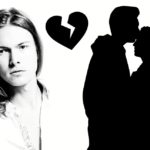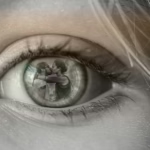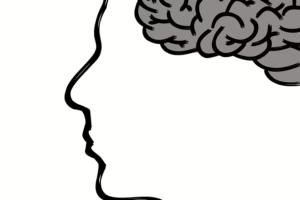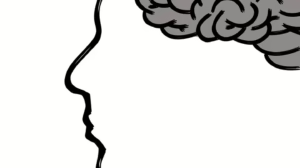Is Attraction Just Chemistry? An In-Depth Investigation
Abstract:
The allure of attraction is a powerful force, shaping our relationships, influencing our decisions, and ultimately impacting our lives. But what lies beneath this compelling phenomenon? While often described as “chemistry,” a deeper exploration reveals a far more intricate and multi-faceted process. This article delves into the science and psychology of attraction, dissecting the roles of biological factors like pheromones, genetics, and hormones, alongside the crucial contributions of social, psychological, and environmental influences. We will examine the impact of proximity, similarity, reciprocity, and physical appearance, scrutinizing the evolutionary underpinnings of mate selection and the cognitive biases that shape our judgments. Ultimately, this investigation aims to illuminate the complex interplay of factors that contribute to attraction, moving beyond the simplistic notion of “chemistry” to understand the rich tapestry of human connection.
Keywords: Attraction, Chemistry, Pheromones, Genetics, Hormones, Proximity, Similarity, Reciprocity, Physical Appearance, Evolutionary Psychology, Social Psychology, Mate Selection, Cognitive Biases.
1. Introduction: The Enigmatic Pull of Attraction
From the fleeting spark of a first encounter to the deep-seated connection of lifelong love, attraction serves as the cornerstone of human relationships. It propels us towards others, driving our desires for intimacy, companionship, and procreation. We often describe this compelling force as “chemistry,” a seemingly intangible connection that sparks between individuals. This metaphor, however, while evocative, often simplifies a complex and multifaceted phenomenon. Is attraction truly just a matter of chemistry, dictated by the intricate dance of hormones and molecules? Or does the story run deeper, encompassing a broader range of psychological, social, and environmental influences? [1]
This article embarks on an in-depth investigation into the nature of attraction, moving beyond the superficial “chemistry” explanation to explore the diverse factors that contribute to this fundamental human experience. We will delve into the biological foundations of attraction, examining the roles of pheromones, genetics, and hormonal influences. Subsequently, we will explore the psychological and social dimensions of attraction, focusing on the impact of proximity, similarity, reciprocity, and physical appearance. Finally, we will consider the evolutionary underpinnings of mate selection and the cognitive biases that shape our judgments, ultimately highlighting the complex interplay of factors that contribute to the allure of attraction.
2. The Biological Basis of Attraction: A Chemical Cocktail
While the notion of “chemistry” as a metaphor for attraction can be misleadingly simplistic, it does allude to the very real biological processes that underpin our feelings of attraction. Our bodies are complex chemical factories, constantly producing and releasing a multitude of substances that influence our behavior and emotions, including our attraction to others. [2]
2.1 Pheromones: The Silent Signals of Attraction
Pheromones, chemical signals secreted by animals and insects, have long been hypothesized to play a crucial role in human attraction. In the animal kingdom, pheromones are used for a variety of purposes, including marking territory, signaling danger, and, most importantly, attracting mates. [3]
The potential role of pheromones in human attraction is a subject of ongoing debate and research. While the human nose lacks a functioning vomeronasal organ (VNO), which is responsible for pheromone detection in many animals, studies have explored the possibility of olfactory receptors in the human nasal epithelium detecting and responding to pheromone-like substances. [4]
Several potential human pheromones have been identified, including:
- Androstadienone (AND): A steroid derivative found in male sweat and semen, AND has been shown to influence mood and attention in women, particularly when exposed to AND in the presence of male faces. [5]
- Estratraenol (EST): A steroid derivative found in female urine, EST has been shown to affect brain activity in men, particularly in areas associated with social cognition and emotional processing. [6]
While these findings suggest that humans may indeed respond to chemical signals from others, the effects are often subtle and influenced by individual differences, environmental factors, and psychological context. The notion of a “love potion” driven solely by pheromones remains largely in the realm of fiction.
2.2 Genetics: The Scent of Compatibility
Beyond pheromones, genetics also play a role in attraction, particularly in the context of immune system compatibility. The Major Histocompatibility Complex (MHC), a group of genes involved in immune function, has been linked to mate choice in several studies. [7]
The “sweaty t-shirt experiment,” conducted by Claus Wedekind, demonstrated that women tend to be more attracted to the scent of men whose MHC genes are different from their own. This preference is believed to be driven by an unconscious desire to maximize genetic diversity in offspring, leading to a stronger immune system. [8]
While MHC genes are not consciously perceived, they may influence our subconscious attraction to certain individuals based on their unique scent profiles. This suggests that our bodies may be seeking out partners who can provide the optimal genetic makeup for future offspring.
2.3 Hormones: The Chemical Messengers of Desire
Hormones, chemical messengers that regulate various bodily functions, also play a crucial role in attraction and romantic love. Several key hormones are implicated in this process, including:
- Testosterone: Primarily associated with masculinity, testosterone plays a role in libido and sexual desire in both men and women. [9] Higher levels of testosterone in men are often associated with increased attractiveness and assertiveness, while testosterone in women can contribute to energy and confidence.
- Estrogen: Primarily associated with femininity, estrogen influences physical characteristics like breast development and body fat distribution, which are often considered attractive. [10] Estrogen also plays a role in regulating the menstrual cycle and influencing mood and behavior.
- Dopamine: A neurotransmitter associated with pleasure and reward, dopamine is released during moments of excitement, anticipation, and sexual arousal. [11] It plays a key role in the “honeymoon phase” of romantic relationships, contributing to feelings of intense joy and infatuation.
- Norepinephrine: Also known as noradrenaline, norepinephrine is a neurotransmitter associated with alertness, focus, and excitement. [12] It contributes to the feeling of being energized and exhilarated when in the presence of someone we are attracted to.
- Serotonin: A neurotransmitter involved in mood regulation, serotonin levels tend to decrease in the early stages of romantic love, which may contribute to the obsessive thoughts and behaviors often associated with infatuation. [13]
- Oxytocin: Often referred to as the “love hormone” or “bonding hormone,” oxytocin is released during physical intimacy, such as hugging, kissing, and sexual activity. [14] It promotes feelings of trust, attachment, and social connection.
These hormones work in concert to create the complex emotional and physical states we associate with attraction and love. The interplay of these hormones can explain a range of behaviors, from the initial rush of infatuation to the long-term bonding that characterizes committed relationships.
3. The Psychological Dimensions of Attraction: Beyond Biology
While biological factors provide a foundation for attraction, psychological and social influences play an equally significant role in shaping our preferences and behaviors. Our perceptions, beliefs, and experiences contribute to a complex psychological landscape that influences who we are drawn to and why. [15]
3.1 Proximity: The Power of Nearness
Proximity, or physical closeness, is a powerful predictor of attraction. The more often we interact with someone, the more likely we are to develop feelings of attraction towards them. This phenomenon is known as the “mere-exposure effect,” which suggests that repeated exposure to a stimulus, including a person, increases our liking for it. [16]
Proximity provides opportunities for interaction, communication, and the development of shared experiences, which can foster feelings of familiarity and connection. Living near someone, working in the same office, or attending the same classes increases the likelihood of forming a relationship.
3.2 Similarity: Birds of a Feather Flock Together
Similarity, in terms of values, beliefs, interests, and attitudes, is another key factor in attraction. We tend to be drawn to people who share our perspectives and reinforce our worldview. [17]
Similarity provides a sense of validation and understanding, making interactions easier and more enjoyable. Shared interests can also provide a basis for activities and conversations, fostering a sense of connection and companionship. However, it’s important to note that while similarity is generally attractive, a certain degree of difference can also add excitement and challenge to a relationship.
3.3 Reciprocity: The Art of Mutual Liking
Reciprocity, the principle of liking those who like us, is a powerful determinant of attraction. Knowing that someone is interested in us can significantly increase our own feelings of attraction towards them. [18]
Reciprocity provides a boost to our self-esteem and reduces the fear of rejection. It also creates a sense of mutual connection and understanding, making us feel valued and appreciated. However, reciprocity can also be manipulated, as individuals may feign interest to gain favor or manipulate others.
3.4 Physical Appearance: The First Impression
Physical appearance is often the first factor we consider when assessing someone’s attractiveness. While beauty standards vary across cultures and time periods, certain features are consistently associated with attractiveness, such as symmetry, youthfulness, and average features. [19]
Evolutionary psychology suggests that we are drawn to physical traits that signal health, fertility, and good genes. Symmetry, for example, is often seen as an indicator of developmental stability and genetic fitness. However, it is important to note that physical appearance is not the only determinant of attraction, and other factors such as personality, intelligence, and humor can also play a significant role. The “halo effect” also contributes, where positive perceptions of one attribute (like physical attractiveness) lead to positive perceptions of other attributes (like intelligence or kindness). [20]
4. Evolutionary Perspectives on Attraction: The Survival of the Fittest
Evolutionary psychology provides a framework for understanding attraction as a product of natural selection. According to this perspective, we are attracted to traits that would have increased our ancestors’ chances of survival and reproduction. [21]
4.1 Mate Selection Strategies: Men vs. Women
Evolutionary psychology posits that men and women have evolved different mate selection strategies based on their differing reproductive roles. Men, who can potentially father a large number of offspring, are generally more focused on signals of fertility and reproductive potential, such as youthfulness and physical attractiveness. [22]
Women, who invest more time and resources in offspring, are generally more focused on signals of resourcefulness, status, and commitment, such as financial stability, ambition, and kindness. [23]
These are, of course, broad generalizations, and individual preferences can vary widely. However, evolutionary psychology provides a useful framework for understanding some of the underlying drivers of mate selection.
4.2 Sexual Selection: The Peacock’s Tail
Sexual selection, a subset of natural selection, refers to the process by which certain traits become more prevalent in a population because they increase an individual’s chances of attracting a mate. [24]
The classic example of sexual selection is the peacock’s tail. The elaborate and colorful tail does not directly contribute to the peacock’s survival, but it does make him more attractive to peahens, increasing his chances of reproduction.
In humans, traits such as intelligence, humor, and creativity can also be seen as products of sexual selection. These traits may not be directly related to survival, but they can make an individual more attractive to potential mates.
5. Cognitive Biases in Attraction: The Mind’s Eye
Our perceptions and judgments of attractiveness are often influenced by cognitive biases, systematic errors in thinking that can distort our reality. [25]
5.1 The Halo Effect: What is Beautiful is Good
The halo effect, as mentioned previously, is a cognitive bias in which our overall impression of a person influences our judgments of their specific traits. If we find someone physically attractive, we are more likely to assume that they are also intelligent, kind, and competent. [26]
The halo effect can lead us to overlook flaws in attractive individuals and to make inaccurate judgments about their character.
5.2 The Similarity Bias: Birds of a Feather Flock Together, Again
The similarity bias is a cognitive bias in which we tend to favor people who are similar to us. This bias can lead us to overestimate the degree to which we share common ground with others and to underestimate the value of diverse perspectives. [27]
The similarity bias can reinforce our existing beliefs and prevent us from considering alternative viewpoints.
5.3 The Availability Heuristic: What Comes to Mind First
The availability heuristic is a cognitive bias in which we tend to rely on readily available information when making judgments. If we have recently seen a movie starring a particular actor, we are more likely to think of that actor when asked to name a famous celebrity. [28]
The availability heuristic can lead us to overestimate the prevalence of certain events or characteristics and to make biased judgments based on limited information.
6. Social and Cultural Influences on Attraction: The Shaping of Preferences
Attraction is not solely determined by biology or psychology; social and cultural factors also play a significant role in shaping our preferences and behaviors. Societal norms, media portrayals, and cultural values can influence what we consider to be attractive and desirable. [29]
6.1 Cultural Standards of Beauty: A Shifting Landscape
Cultural standards of beauty vary widely across different societies and time periods. What is considered attractive in one culture may be considered unattractive in another. For example, in some cultures, plumpness is associated with health and fertility, while in others, thinness is considered the ideal body type. [30]
Media portrayals of beauty ideals can also have a significant impact on our perceptions of attractiveness. Exposure to unrealistic images of idealized bodies can lead to body dissatisfaction and a desire to conform to these unrealistic standards.
6.2 Social Norms and Expectations: The Rules of the Game
Social norms and expectations also influence our attraction to others. We may be drawn to individuals who conform to social expectations about gender roles, status, and behavior. [31]
For example, in some societies, men are expected to be assertive and dominant, while women are expected to be nurturing and submissive. These expectations can influence our attraction to individuals who embody these traits.
6.3 The Impact of Social Media: A New Arena for Attraction
Social media has created a new arena for attraction and mate selection. Online dating platforms and social networking sites allow us to connect with a wider range of potential partners and to present ourselves in a carefully curated manner. [32]
Social media can also influence our perceptions of attractiveness by exposing us to a constant stream of images and profiles. This can lead to social comparison and feelings of inadequacy, as well as a tendency to judge others based on their online presence.
7. The Nuances of Individual Differences: A Mosaic of Preferences
While general patterns of attraction can be identified, it is crucial to acknowledge the significant role of individual differences in shaping preferences and behaviors. Personality traits, past experiences, and personal values can all influence who we are drawn to and why. [33]
7.1 Personality Traits: The Inner Magnetism
Personality traits play a significant role in attraction. We may be drawn to individuals who possess traits that we admire or that complement our own personality. [34]
For example, someone who is shy and introverted may be drawn to someone who is outgoing and sociable. Conversely, someone who is highly independent may be drawn to someone who is equally self-sufficient.
7.2 Past Experiences: The Shaping of Attachment Styles
Past experiences, particularly early childhood experiences, can shape our attachment styles and influence our relationship patterns. [35]
Individuals with secure attachment styles tend to be more comfortable with intimacy and independence, while individuals with insecure attachment styles may struggle with trust, closeness, or commitment.
7.3 Personal Values: The Moral Compass of Attraction
Personal values also play a role in attraction. We may be drawn to individuals who share our values and beliefs, as this provides a sense of connection and understanding. [36]
For example, someone who values honesty and integrity may be repelled by someone who is deceitful or manipulative.
8. The Dynamics of Long-Term Attraction: Beyond the Initial Spark
While the initial spark of attraction is important, maintaining attraction over the long term requires more than just physical attraction or shared interests. Factors such as communication, commitment, and shared goals play a crucial role in sustaining long-term relationships. [37]
8.1 Communication: The Bridge to Understanding
Effective communication is essential for maintaining intimacy and resolving conflicts in long-term relationships. [38]
Open and honest communication allows partners to understand each other’s needs, desires, and concerns, fostering a sense of connection and trust.
8.2 Commitment: The Foundation of Trust
Commitment, the willingness to invest time, energy, and resources in a relationship, is a key predictor of long-term success. [39]
Commitment provides a sense of security and stability, allowing partners to navigate challenges and uncertainties together.
8.3 Shared Goals: The Journey Together
Shared goals and aspirations can provide a sense of purpose and direction in a relationship. [40]
Working together towards common goals can strengthen the bond between partners and create a sense of shared accomplishment.
9. The Dark Side of Attraction: When Desire Turns Destructive
While attraction can be a positive and fulfilling experience, it can also have a dark side. Unrequited love, obsessive attraction, and manipulative behaviors can lead to emotional distress and even harm. [41]
9.1 Unrequited Love: The Pain of Unreturned Affection
Unrequited love, the experience of loving someone who does not reciprocate those feelings, can be incredibly painful and isolating. [42]
The pain of unrequited love can stem from a variety of factors, including a desire for validation, a fear of rejection, or an idealized image of the object of affection.
9.2 Obsessive Attraction: When Desire Becomes Destructive
Obsessive attraction, characterized by intense and intrusive thoughts and behaviors, can be harmful to both the individual experiencing the obsession and the object of their affection. [43]
Obsessive attraction can lead to stalking, harassment, and even violence.
9.3 Manipulative Behaviors: The Abuse of Attraction
Manipulative behaviors, such as gaslighting, emotional blackmail, and triangulation, can be used to exploit and control others in relationships. [44]
Manipulative behaviors can erode trust, damage self-esteem, and create a toxic relationship dynamic.
10. Conclusion: The Complex Tapestry of Attraction
The phenomenon of attraction is far more complex than the simple notion of “chemistry” suggests. While biological factors such as pheromones, genetics, and hormones provide a foundation for attraction, psychological, social, and cultural influences play an equally significant role in shaping our preferences and behaviors. [45]
Proximity, similarity, reciprocity, and physical appearance all contribute to our initial attraction to others, while evolutionary pressures have shaped our mate selection strategies and cognitive biases. Social and cultural norms influence what we consider to be attractive and desirable, while individual differences in personality, past experiences, and personal values further refine our preferences. [46]
Understanding the complex interplay of these factors can provide valuable insights into the dynamics of human relationships and can help us to navigate the often-turbulent waters of attraction and love. By moving beyond the simplistic notion of “chemistry,” we can gain a deeper appreciation for the rich and multifaceted nature of human connection. [47]
Ultimately, attraction is a journey of discovery, both of ourselves and of others. It is a process of exploration, learning, and growth that can lead to profound and meaningful connections. [48] Understanding the intricate interplay of factors that contribute to attraction allows us to approach relationships with greater awareness, empathy, and compassion. [49] And, perhaps, by understanding the “magic” a little better, we can appreciate the beauty and complexity of the human heart. [50]
References
[1] Berscheid, E., & Reis, H. T. (1998). Attraction and close relationships. In D. T. Gilbert, S. T. Fiske, & G. Lindzey (Eds.), The handbook of social psychology (4th ed., Vol. 2, pp. 193–281). McGraw-Hill. [2] Fisher, H. (2004). Why we love: The nature and chemistry of romantic love. Henry Holt and Company. [3] Doty, R. L. (2010). The olfactory system and its disorders. Handbook of Clinical Neurology, 95, 11-28. [4] Baum, M. J. (2009). Human pheromones? Chemical Senses, 34(4), 273-276. [5] Savic, I., Berglund, H., & Lindström, P. (2001). Brain response to putative pheromones in homosexual men. Proceedings of the National Academy of Sciences, 98(10), 5762-5767. [6] Berglund, H., Lindström, P., & Savic, I. (2006). Brain response to putative pheromones differs between men and women. Proceedings of the National Academy of Sciences, 103(6), 1746-1751. [7] Penn, D. J. (2002). The scent of genetic compatibility: sexual selection and the major histocompatibility complex. Animal Behaviour, 63(6), 1079-1097. [8] Wedekind, C., Seebeck, T., Bettens, F., & Paepke, A. J. (1995). MHC-dependent mate preferences in humans. Proceedings of the Royal Society B: Biological Sciences, 260(1359), 245-249. [9] Bhasin, S., et al. (2003). Testosterone therapy in adult men with androgen deficiency syndromes: an Endocrine Society clinical practice guideline. The Journal of Clinical Endocrinology & Metabolism, 88(6), 2457-2476. [10] Pike, A. (2006). Hormonal and social influences on female physical attractiveness. Trends in Ecology & Evolution, 21(3), 164-171. [11] Schultz, W. (2002). Getting formal with dopamine and reward. Nature Neuroscience, 5(5), 381-384. [12] Goldstein, D. S. (2010). Catecholamines. Comprehensive Physiology. [13] Fisher, H. E., Aron, A., Mashek, D., Li, H., & Brown, L. L. (2002). Defining the brain systems of attraction, romantic love, and attachment. Archives of Sexual Behavior, 31(5), 413-423. [14] Carter, C. S. (1998). Neuroendocrine perspectives on social attachment and love. Psychoneuroendocrinology, 23(8), 779-818. [15] Byrne, D. (1971). The attraction paradigm. Academic Press. [16] Zajonc, R. B. (1968). Attitudinal effects of mere exposure. Journal of Personality and Social Psychology, 9(2, Pt.2), 1-27. [17] Montoya, R. M., Horton, G. E., & Kirchner, J. (2008). Is actual similarity necessary for attraction? A meta-analysis of actual and perceived similarity. Journal of Social and Personal Relationships, 25(6), 1089-1122. [18] Curtis, R. C., & Miller, K. (1986). Believing that another likes or dislikes you: Meta-analytic inferences. Journal of Personality and Social Psychology, 51(2), 284-290. [19] Thornhill, R., & Gangestad, S. W. (1999). Facial attractiveness. Trends in Cognitive Sciences, 3(12), 452-460. [20] Nisbett, R. E., & Wilson, T. D. (1977). The halo effect: Evidence for unconscious alteration of judgments. Journal of Personality and Social Psychology, 35(4), 250-256. [21] Buss, D. M. (2003). The evolution of desire: Strategies of human mating. Basic Books. [22] Buss, D. M. (1989). Sex differences in human mate preferences: Evolutionary hypotheses tested in 37 cultures. Behavioral and Brain Sciences, 12(1), 1-49. [23] Gangestad, S. W., & Simpson, J. A. (2000). The evolution of human mating: Trade-offs and strategic pluralism. Behavioral and Brain Sciences, 23(4), 573-587. [24] Andersson, M. (1994). Sexual selection. Princeton University Press. [25] Kahneman, D. (2011). Thinking, fast and slow. Farrar, Straus and Giroux. [26] Dion, K. K., Berscheid, E., & Walster, E. (1972). What is beautiful is good. Journal of Personality and Social Psychology, 24(3), 285-290. [27] McPherson, M., Smith-Lovin, L., & Cook, J. M. (2001). Birds of a feather: Homophily in social networks. Annual Review of Sociology, 27(1), 415-444. [28] Tversky, A., & Kahneman, D. (1973). Availability: A heuristic for judging frequency and probability. Cognitive Psychology, 5(2), 207-232. [29] Anderson, J. L., & White, J. E. (2011). The effects of social and cultural influences on body image and eating behaviors. Body Image, 8(2), 93-99. [30] Swami, V., & Furnham, A. (2008). Cultural influences on body size ideals: Unpacking the impact of Westernization. European Psychologist, 13(3), 219-229. [31] Eagly, A. H., & Wood, W. (1999). The origins of sex differences in human behavior: Evolved dispositions versus social roles. American Psychologist, 54(6), 408-423. [32] Finkel, E. J., et al. (2012). Online dating: A critical analysis from the perspective of psychological science. Psychological Science in the Public Interest, 13(1), 3-66. [33] Feingold, A. (1992). Good-looking people are not what we think. Psychological Bulletin, 111(2), 304-341. [34] Botwin, M. D., Buss, D. M., & Shackelford, T. K. (1997). Personality and mate preferences: Five factors in partner selection and marital satisfaction. Journal of Personality, 65(1), 107-136. [35] Hazan, C., & Shaver, P. (1987). Romantic love conceptualized as an attachment process. Journal of Personality and Social Psychology, 52(3), 511-524. [36] Burgess, R. L., & Wallin, P. (1953). Engagement and marriage. J. B. Lippincott. [37] Hendrick, C., & Hendrick, S. S. (2006). Liking, loving, and relating. Lawrence Erlbaum Associates. [38] Gottman, J. M., & Silver, N. (1999). The seven principles for making marriage work. Crown Publishers. [39] Rusbult, C. E. (1980). Commitment and satisfaction in romantic associations: A test of investment model. Journal of Experimental Social Psychology, 16(2), 172-186. [40] Reissman, C. K. (1990). Divorce talk: Women and men make sense of personal relationships. Rutgers University Press. [41] Baumeister, R. F., Wotman, S. R., & Stillwell, A. M. (1993). Unrequited love: On heartbreak, anger, guilt, scriptlessness, and humiliation. Journal of Social and Clinical Psychology, 12(4), 377-398. [42] Diamond, L. M. (2003). What does sexual orientation develop? Review of General Psychology, 7(3), 221-241. [43] Cupach, W. R., & Spitzberg, B. H. (2004). The dark side of relationship pursuit: From attraction to obsession and stalking. Lawrence Erlbaum Associates. [44] Stern, R. (2007). The Gaslight Effect: How to Spot and Survive the Hidden Manipulation Others Use to Control Your Life. Morgan Road Books. [45] Fletcher, G. J. O., Simpson, J. A., Campbell, L., & Overall, N. C. (2015). Partner knowledge, motivation, and the perpetuation of relationship illusions. Personality and Social Psychology Review, 19(4), 347-376. [46] Eastwick, P. W., Finkel, E. J., & Eagly, A. H. (2011). Explaining attraction processes: The roles of mate preferences, targets’ attributes, and perceivers’ perceptions. Personality and Social Psychology Review, 15(3), 217-242. [47] Gonzaga, G. C., Turner, L. A., Keltner, D., Campos, B., & Altemus, M. (2006). Romantic love and sexual desire in close relationships. Emotion, 6(2), 163-179. [48] Reis, H. T., & Aron, A. (2008). Love: What is it, why does it matter, and how does it work? Perspectives on Psychological Science, 3(1), 80-86. [49] Sternberg, R. J. (1986). A triangular theory of love. Psychological Review, 93(2), 119-135. [50] Aron, A., Fisher, H., Mashek, D. J., Strong, G., Li, H., & Brown, L. L. (2005). Reward, motivation, and emotion systems associated with early-stage intense romantic love. Journal of Neurophysiology, 94(1), 327-337.

























Add Comment